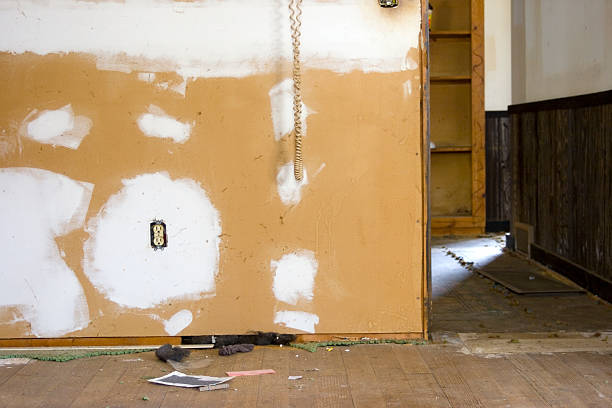Reach Out to Us!
1 minute read
Have you ever heard the saying, “Penny wise, pound foolish”? It rings especially true when it comes to home remodeling. Many California homeowners dream of transforming their homes, only to wake up in a nightmare of unfinished projects, unsafe structures, and wasted savings because of shoddy remodeling work. Imagine paying thousands for a new kitchen, only to find out the cabinets are crooked, the tiles crack within months, and the contractor has vanished with your deposit.
At Homerun Restoration, we know the stakes. For over a decade, our team has stood for quality, transparency, and trust. This guide is designed to help you—California homeowners—spot the traps, check the licenses, and use California’s strong laws to protect your investment.
As the old proverb goes, “A stitch in time saves nine.” These five steps will save you from regret and shield you from shoddy remodeling work.

The Essential Red Flags: Warning Signs of a Scam
The High-Pressure/Low-Ball Trap
Ever been offered something “too good to be true”? That’s exactly how many scams start. Shady contractors lure homeowners with prices way lower than competitors, promising luxury finishes at bargain rates. A family in San Diego, CA, once told us they hired a remodeler who quoted half the average bid. Within weeks, the crew disappeared, leaving only rubble behind.
A trusted contractor will give a fair market price, not a bait-and-switch offer. At Homerun Restoration, we believe honest pricing is the foundation of lasting work.
The Cash-Only Demand
“Cash is king,” they say, but in remodeling, it’s a red flag. Reputable contractors provide receipts, invoices, and bank records. If someone insists on cash, you lose your paper trail and legal leverage. Always ask: “Why cash only?” If the answer sounds shaky, so will your remodel.
The “No Contract, No Problem” Lie
California law is crystal clear: projects over $500 must have a written contract. Yet some shady remodelers shrug it off, saying, “We’ll work on trust.” But trust without paper is a recipe for trouble. If something goes wrong, you’ll have nothing to enforce.
Homerun Restoration always provides detailed contracts, ensuring every term is clear and binding.
The “Permits are Optional” Shortcut
Have you ever heard the phrase, “Cutting corners only builds crooked houses”? Skipping permits is exactly that. Permits aren’t optional in California—they’re protection for homeowners. If your contractor says otherwise, it’s not just shoddy remodeling work; it’s illegal.

Vetting 101: Mandatory Due Diligence
Verify the Contractor’s License (CSLB)
In California, the Contractors State License Board (CSLB) is your first line of defense. Ask yourself: “Does my contractor have a valid license for the work?” A license isn’t just a piece of paper—it proves accountability, insurance, and skill.
Checking is simple. Visit the CSLB website, type in the name, and confirm the license is active, covers the right category, and has no disciplinary actions. It’s free and takes five minutes. Five minutes that could save you five years of headaches.
Insurance Verification
A neighbor in La Mesa, CA, once shared how a worker fell during their remodel. Because the contractor didn’t carry workers’ compensation insurance, the homeowner got sued. Shoddy remodeling work doesn’t just damage walls—it can ruin finances.
Always demand two things: liability insurance and workers’ compensation insurance. Call the insurance company directly. Ask: “Is this policy active and valid for these dates?” If not, walk away.
The Three-Reference Rule
Good contractors leave behind happy clients. Ask for three references from recent jobs similar to yours. Call those clients and ask: “Did the work finish on time? Was the budget respected? Did they communicate well?”
At Homerun Restoration, our past clients are our strongest advocates. Their stories prove that our work stands the test of time.

Legal Protection: Critical California Contract Requirements
The $1,000/10% Down Payment Rule
Here’s a law every California homeowner should memorize: contractors cannot ask for more than 10% of the project price or $1,000—whichever is less—as a down payment.
If someone demands $5,000 upfront, they’re breaking the law. Many victims of shoddy remodeling work only realized this after losing their deposit. Knowledge is your armor.
Mandatory Contract Elements
Every California contract must spell out:
- Scope of Work: What’s being done, where, and how.
- Payment Schedule: Tied to real milestones, like plumbing inspection or drywall completion.
- Timeline: A clear start and estimated end date.
- Right to Cancel: California law allows a 3-day cancellation window for certain contracts.
Contracts are not just paperwork—they’re shields protecting homeowners from fraud.

Project Management: Keeping Control of the Job
Managing Payments
Think of remodeling like a long journey. You don’t pay the driver before reaching your destination, right? The same goes for remodeling. Pay only when milestones are complete and inspected.
This rule has saved countless homeowners from shoddy remodeling work. At Homerun Restoration, payments are tied to progress, never promises.
The Change Order Process
Verbal agreements are slippery as soap. If a contractor says, “We’ll just add this later, no need to write it down,” beware. Every change—whether it’s new tiles or a bigger window—must be documented and signed. That’s called a change order, and it’s your record of truth.
Documentation is Your Defense
Keep a neat folder with every receipt, email, signed change order, and progress photo. If things go south, your documents become your shield. As the saying goes, “Paper remembers what people forget.”
FAQs
How do I know if my contractor is scamming me?
Look for cash-only demands, no contracts, skipped permits, or prices far below the market average. These are classic red flags.
What legal steps protect me in California?
Always follow CSLB checks, verify insurance, and enforce the 10%/$1,000 down payment law. Insist on written contracts with mandatory clauses.
Can I fire a contractor who does shoddy work?
Yes, but you must document everything and follow contract terms. Keep evidence for CSLB complaints or small claims court if needed.
What should I do if I have already paid too much upfront?
Stop further payments immediately. Contact CSLB and consider legal counsel. Reporting the issue may help recover funds or prevent further damage.